- News
- Reviews
- Bikes
- Components
- Bar tape & grips
- Bottom brackets
- Brake & gear cables
- Brake & STI levers
- Brake pads & spares
- Brakes
- Cassettes & freewheels
- Chains
- Chainsets & chainrings
- Derailleurs - front
- Derailleurs - rear
- Forks
- Gear levers & shifters
- Groupsets
- Handlebars & extensions
- Headsets
- Hubs
- Inner tubes
- Pedals
- Quick releases & skewers
- Saddles
- Seatposts
- Stems
- Wheels
- Tyres
- Tubeless valves
- Accessories
- Accessories - misc
- Computer mounts
- Bags
- Bar ends
- Bike bags & cases
- Bottle cages
- Bottles
- Cameras
- Car racks
- Child seats
- Computers
- Glasses
- GPS units
- Helmets
- Lights - front
- Lights - rear
- Lights - sets
- Locks
- Mirrors
- Mudguards
- Racks
- Pumps & CO2 inflators
- Puncture kits
- Reflectives
- Smart watches
- Stands and racks
- Trailers
- Clothing
- Health, fitness and nutrition
- Tools and workshop
- Miscellaneous
- Buyers Guides
- Features
- Forum
- Recommends
- Podcast
review
£24.99
VERDICT:
Beautiful ride quality and very lightweight, but question marks over the ability to repair
Lightweight
Great ride quality
Inability to repair satisfactorily
Only one valve length
Weight:
43g
Contact:
At road.cc every product is thoroughly tested for as long as it takes to get a proper insight into how well it works. Our reviewers are experienced cyclists that we trust to be objective. While we strive to ensure that opinions expressed are backed up by facts, reviews are by their nature an informed opinion, not a definitive verdict. We don't intentionally try to break anything (except locks) but we do try to look for weak points in any design. The overall score is not just an average of the other scores: it reflects both a product's function and value – with value determined by how a product compares with items of similar spec, quality, and price.
What the road.cc scores meanGood scores are more common than bad, because fortunately good products are more common than bad.
- Exceptional
- Excellent
- Very Good
- Good
- Quite good
- Average
- Not so good
- Poor
- Bad
- Appalling
Schwalbe has released the Aerothan tube, made from a thermoplastic material that's completely different to that used for most standard tubes. Available in various sizes for road, gravel and mountain bike markets, it's an extremely lightweight tube that is claimed to be more puncture resistant than butyl tubes and to improve rolling resistance, but might not be possible to repair.
How can you test an inner tube? It was a question that was raised immediately when the new Aerothan tube came in for testing. It is a valid question, so I came up with a plan to attempt to test it fairly and compare it to a traditional butyl tube.
- Step 1 - A back-to-back ride to see if any difference in ride quality
- Step 2 - Attempt to check puncture resistance
- Step 3 - See if it will hold a high pressure over time
The Aerothan is a thermoplastic tube and Schwalbe has been working with chemical company BASF for over five years, developing and refining the material. It is available in eight different sizes, designed for road, mountain biking and gravel/trekking. All versions are claimed to be incredibly light, with the SV20E road version, which is designed for 23-28mm tyres, just 43g on my scales.
To put that into perspective, a standard tube for the same size will be 100-120g and a lightweight butyl tube around 80-100g. There are also some incredibly light butyl tubes such as the Continental Supersonic at just over 50g, but they are fragile and usually classed as race-only items.
Thermoplastic style tubes are not new and there are a few other companies making similar types, including Tubolito with the Tubo, which Neil reviewed a few months ago.
All the Aerothan tubes are only available with a single valve length of 40mm, so valve extenders will be needed for deep rims. The valve core is removable, so both types of extender could work, although the valve stem is plastic so extra care is required if changing the valve core or installing an extender.
Schwalbe claims the new Aerothan offer increased puncture resistance over a standard butyl tube, which would be impressive given the weight. Another popular option for racers are latex tubes; these are usually lighter, but also offer an improved ride quality and lower rolling resistance. The downside to latex tubes is that they do lose air far quicker, usually around 10 per cent lost within the first 24 hours, so checking and adding air is required before every ride.
The Aerothan is also considerably lighter than a tubeless setup when you factor in the heavier tubeless tyre, sealant and valve stem, and the claims for improved ride quality and extra puncture resistance are very similar to the benefits of going tubeless – if they prove to be true.
To find out, I used a 10km loop on a local road that has a mix of surface conditions but is mostly flat. Initially I rode a bike with standard butyl inner tubes, then after completing the loop I went to swap the tubes, before another lap of the circuit.
Unfortunately, in my haste I caught one of the tubes in the bead when inflating, and punctured it, creating a small hole. This my error, no fault of the tube, and almost certainly would have happened to either a butyl or latex tube. It did mean I could fast forward to Step 2, testing the puncture repair.
> Buyer’s Guide: 7 of the best inner tubes
Repairing is apparently possible using Schwalbe glueless patches. The tube needs to be clean and dry before applying. However, when inflating with the repaired tube, the patch blew off well below riding pressure. I tried a second patch, this time pushing harder to ensure the glue had worked. It pumped up OK to my riding pressure of 80psi and I went to complete another lap.
Immediately, the difference in ride quality was noticeable, giving a smoother ride and muting road imperfections. Things didn't go so well with the repair, though, and less than 3km into the loop the patch failed again. Given that it was the front wheel and I had lost all confidence, I replaced it with a butyl tube and headed home unimpressed.
I later tried a third patch, this time pushing the glueless patch harder and then leaving it for 30 minutes to see if it needed time to set. This isn't practical for a roadside repair, but I wanted to see if it would work. Again, it was inflated to 80psi, and within five minutes the patch had failed.
I continued with the testing, though, now with just the single tube and on to step 3.
For this, the tube was inflated to 120psi and left for two nights to test its air-holding ability; over that time it lost no pressure, which is a big benefit over latex tubes for everyday use.
> How to choose the best tyre pressure for speed, comfort and grip
I continued to use the Aerothan in just the rear at my usual pressure of 80psi, and the performance – the comfort in particular – was brilliant. Around where I ride the hedges are being cut now it is autumn, and the risk of punctures is a little higher than normal. Okay, it might be more luck than anything else, but I did not suffer a puncture. I also tried to ride small, rougher lanes to see how it might cope and again it was fine. At times I would bounce on the wheels, look behind me and check to see if there was a slow puncture, as sometimes the ride just seemed too comfortable, or rather, significantly more comfortable than I am used to. It was almost exactly the same feeling as when I first used latex tubes, as they also improve the ride comfort.
While the material itself may be very tough, it can still be punctured, even if accidentally as I did, and given that the repair is not safe or strong enough, it essentially would mean that you still need to carry spare tubes and not rely upon the ability to fix it. I can imagine other people doing what I did, which is then £25 wasted. Schwalbe claims the glueless patch is the correct way to repair it, but this was not the case for me. I also tried using a Tubolito tube repair patch that I had, but this, too, failed.
Is there still a place for a tube like this? And would I recommend one or use one myself? This is where I am completely torn. If you had asked me the day after the first test I would have sworn no, but as I have continued to use it, the benefits have grown on me. It might be expensive for a tube, but for those looking to drop weight it offers better savings per gram than most other options.
It could also be a good option for a lightweight, very small spare, although disc brake riders might also look at the Tubolito S Tubo, which is half the weight again at just 23g and absolutely tiny. How reliable it would be I do not know, as although I own one and carry one mostly for events and big rides, I have not yet been unlucky enough to have to use it. The standard Tubolito Tubo that Neil reviewed is almost the same weight as the Aerothan, and available with three different valve sizes, with very similar claimed benefits.
Schwalbe really needs to find a viable repair solution to make the Aerothan tube a better option, even if the repair is only good as a 'get you home' type repair, but currently, in my experience, it is not even that. All that said, assuming you are far more careful than I was when installing and still carry a butyl spare tube, then the extra comfort it provides may be enough to make it worth it, and for those looking to save weight, it offers a good saving and for decent gram per £ cost.
Verdict
Beautiful ride quality and very lightweight, but question marks over the ability to repair
road.cc test report
Make and model: Schwalbe Aerothan inner tube
Size tested: 23-28mm
Tell us what the product is for and who it's aimed at. What do the manufacturers say about it? How does that compare to your own feelings about it?
Schwalbe says:
Outstandingly light-weight, extremely robust: The tube revolution made of Aerothan
Aerothan is a material that completely redefines bicycle tubes: extremely light, with maximum puncture protection and designed for minimum rolling resistance.
The revolutionary new tube made of Aerothan achieves top values for elasticity, weight and puncture protection never seen before – and all that without rubber. For road bikes, mountain bikes and trekking bikes.
Of the Aerothan Race tube:
AEROTHAN TUBE RACE
For road riding with tubes, the Aerothan tube is the first choice. It offers low rolling resistance with dynamic, smooth riding characteristics. Compared to butyl tubes, a total weight reduction of 100g may be achieved for the entire bike. Aerothan Tube Race offers not only reliable puncture protection, but also safety when descending a mountain: Even when several emergency brakes are applied with rim brakes in short sequence, one can count on its heat resistance capacities.
Tell us some more about the technical aspects of the product?
Schwalbe lists:
· Fully light-weight, right to the valve - about 40% less weight than a comparable Schwalbe extra light tube
· Puncture protection newly defined - the material itself prevents sudden air loss
· Minimal rolling resistance - maximum riding dynamics
· 100% recyclable
· Extremely heat resistant - certified for rim brakes · A stable ride - even with low air pressures
· Made in Germany
Rate the product for quality of construction:
7/10
The construction is a little different to other thermoplastic tubes I have seen and used, and looks very good. No issues other than those inflicted by myself through the use.
Rate the product for performance:
8/10
Hard to argue against the claimed benefits and the extra comfort on offer is immediately noticeable and very effective. No punctures while riding in use, which may just be luck.
Rate the product for durability:
5/10
While the material might be strong and might be more puncture resistant, the inability to repair safely is a big compromise and ultimately means a single puncture could mean the tube can no longer be used.
Rate the product for weight (if applicable)
9/10
Very light at 43g, lighter than all butyl tubes and all latex tubes. On a par with the Tubolite Tubo, although not quite as light as the Tubolite Tubo S version, but that is only suitable for disc brake road bikes.
Rate the product for comfort (if applicable)
9/10
Exceptional and very noticeable. Similar performance benefits to latex tubes, but without the need to inflate every ride.
Rate the product for value:
5/10
Expensive compared to both butyl and latex tubes, although on a par with the other most common TPU tube from Tubolito.
Weight saving cost per gram is decent, although ultimately for a tube it is expensive.
Tell us how the product performed overall when used for its designed purpose
Improved comfort was immediately noticeable and although not conclusive proof, I had no punctures in use.
The inability to repair is a big issue, though, and will limit its use for some riders or situations.
Tell us what you particularly liked about the product
The extra comfort it provided.
Tell us what you particularly disliked about the product
Although it was my fault, the fact that I could not safely repair the tube was incredibly frustrating.
How does the price compare to that of similar products in the market, including ones recently tested on road.cc?
It is cheaper than its main rival, the Tubolito Tubo, which is £5 more but a few grams lighter. Compared to more standard butyl and latex tubes it is two or three times the price, and is over £10 more than even the Vittoria Competition latex tube, which is one of the most expensive tubes currently available.
Did you enjoy using the product? Yes, although very frustrating not to be able to repair it.
Would you consider buying the product? Yes
Would you recommend the product to a friend? Yes, though I would stress how important careful installation is, and that it might not be possible to repair it.
Use this box to explain your overall score
The performance seems to match the claimed benefits and I was very surprised by the improved comfort. That alone could make it a good option for some. Although the puncture was my own error, the inability to fix it was very frustrating and I think Schwalbe needs to have a viable repair option in place for the tubes when using them at road pressures.
About the tester
Age: 35
I usually ride: My best bike is: Cannondale SystemSix
I've been riding for: Over 20 years I ride: Every day I would class myself as: Expert
I regularly do the following types of riding: road racing, cyclo cross, sportives, mtb,
Matt is an endurance nut who loves big rides and big events. He's a former full-time racer and 24hr event specialist, but now is also happy riding on or off-road and loves long adventures and audax events.
Latest Comments
- bobbinogs 3 hours 57 min ago
Yepp, fantastic coverage. It seems strange that WBD have forced me to spend less and get better coverage! Thing is, I would have been happy with a...
- David9694 4 hours 45 min ago
+1 on saddle height and also check your lateral alignment - everything should be straight and aligned. My bike fit years ago moved my feet to the...
- froze 4 hours 49 min ago
Everything Lezyne sells are really good, especially their pumps, and the Torque Drive. ...
- wtjs 5 hours 33 min ago
It's not only the UK which suffers from vile louts-VdP is a great athlete who deserves respect!
- Hirsute 6 hours 8 min ago
https://www.youtube.com/watch?v=wOzP87HVCWw
- Rendel Harris 7 hours 35 min ago
Apart from the fact that you're completely wrong - Decathlon is a French company and has 1045 stores in Europe compared to 50 in the UK - whilst...
- hawkinspeter 9 hours 41 min ago
Finally tried out the Smart Lever that I did get for Xmas as I had a suspicious looking bubble/bump on my rear GoodYear tyre (don't think I'll buy...
- pockstone 10 hours 6 min ago
Suitable reply, No Reply.
- chrisonabike 12 hours 43 min ago
Further motoring exemptions have been highlighted by a certain celebrity lawyer: needing the loo, being a well-known footballer...







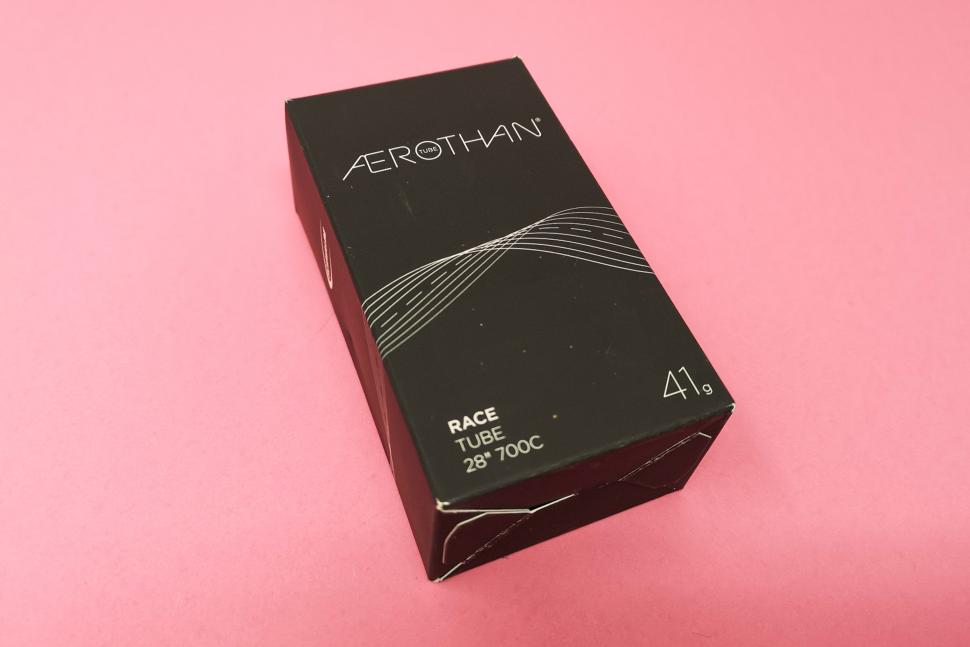
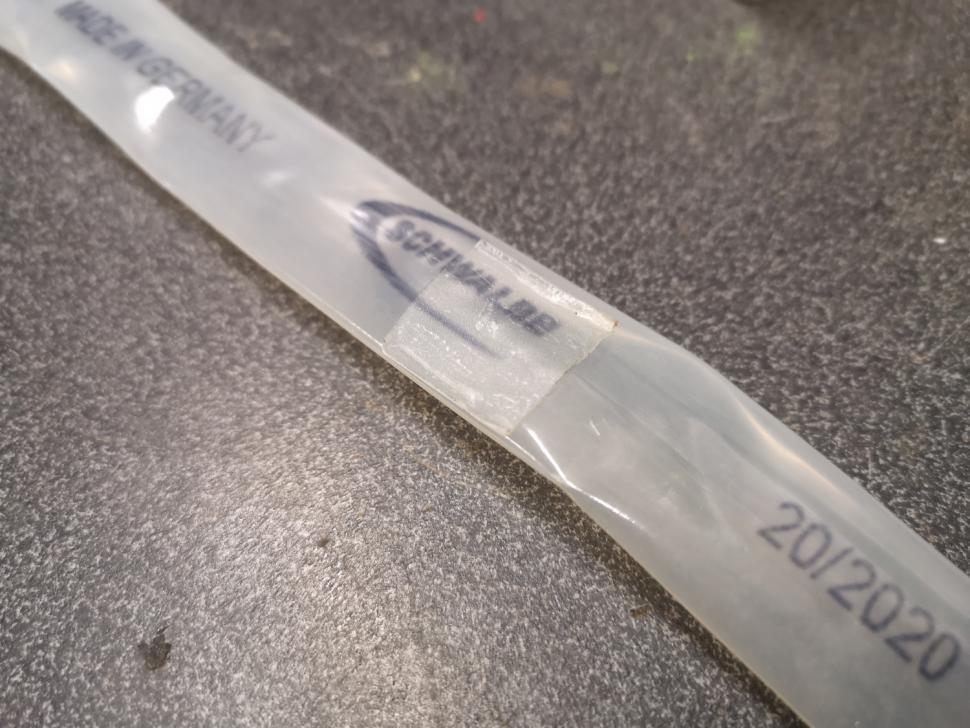


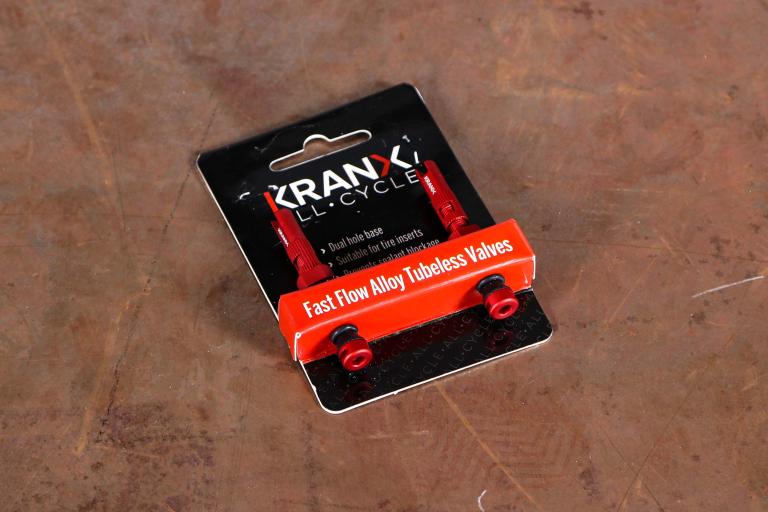
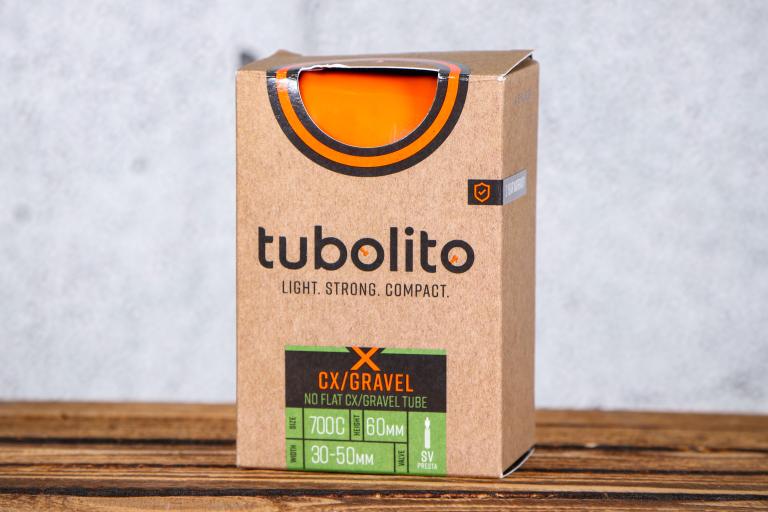
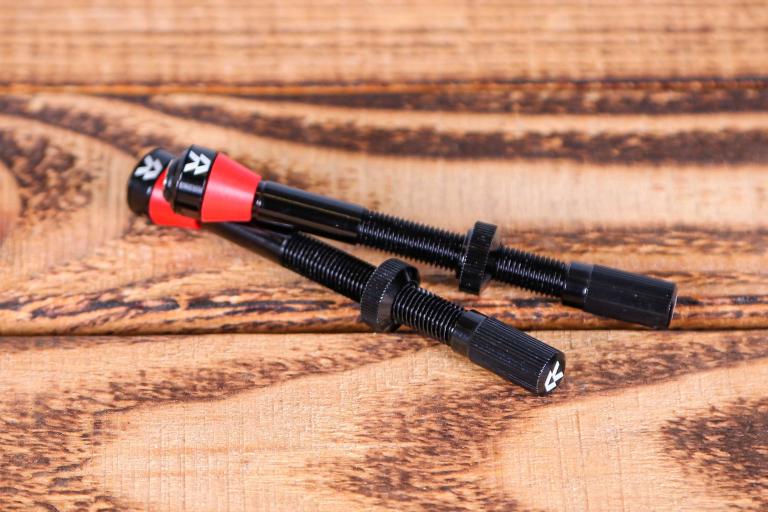
Add new comment
10 comments
They are definitely comfier than a Conti Race tube. I punctured an Aerothan after about 500 miles (massive thorn!) and was hoping I wouldn't notice the difference when putting a Conti back in but I did immediately and that was only the front. Schwalbe says to use one of their patches and give the tube a good clean first, I did this and the patch has held for 6 months/1500 miles.
Due to the speed and comfort of these I don't ever want to go back to butyl, the weight saving is just a bonus.
Apparently, despite the instructions, the area of the tube to be patched has to be spotlessly clean for the patch to stick. It then works.
"Immediately, the difference in ride quality was noticeable"
Gotta say that smacks of confirmation bias, a widespead problem with bike equipment reviewing.
Usually it's really hard to eliminate because it's practically impossible to stop a rider from being able to tell which bike, tyres or wheels they're riding, but it could be done here.
You need two identical wheelsets, preferably both brand spanking new. Have a mechanic assemble them, inflate them to the same tyre pressure and label them X and Y.
Then have an assistant fit them to the bike, and go off and ride. Return to base, have assistant swap them round. Repeat a couple times.
If you can tell the difference, *then* there's something to talk about.
Given the tiny difference in rolling resistance between Tubolito and lightweight butyl that Jarno Bierman found, I doubt that you'd be able to tell the difference here in such a blind test.
Colour me skeptical when people claim to be able to feel a pea under the mattress. Of course, if it's your own bike then fair enough, I'll settle for the truism that perception is reality. But for an independent review it would help if there was some attempt to guard against the inevitability of human bias. Unless you can reliably and repeatedly distinguish between two alternative setups without knowing which is which then findings about subjective comfort and ride quality of an inner tube must be tainted, since it is not humanly possible to exclude bias.
I have used the tubolito already for a while. Used it recently in Spain on my rim brake bike. Got flatted by a hard hit on a descent due to a pinch. They work very well and the snake bite punctured only at one point. Was surprised as I initially thought my carbon rim got damaged.
At home fixed the tire but it failed two days later. Upon close inspection you see that the patches are covering the whole inner and the glue is not drying out. Two issues here. The patch doesn't stretch and the glue is not hardening so upon inflation the glue will give in. Also heat makes it soft again.
How to fix properly :
- cut the patch smaller
- clean area as per instructions
- use a bit of super glue on the inner tube area of the puncture (the very small canisters with a small bristle from Bison are easy)
- slightly inflate the inner before applying the patch
- hold it for 5 minutes
- let it dry properly for an extended period
- Roll it up again and use it as your new spare !!!! They can be rolled up even smaller
- Permanent fix for this inner and reusable without issue (I'm using it now for more then a month without issues and removed the inner already once to check, curious)
Why bother with road side repairs ??? Use a spare oneThey are light and small. I use two spares, 2 Co2 canisters, 2 tire levers and small inflator in the smallest Castelli seatbag (similar to Rapha). I can hardly fit one butyl inner in there. So two tubolitos are lighter and can fix two punctures.
Im sure this can be done to these tubes too as they are from a similar material
Interested in the comfort/rolling resistance aspect to these. Will be keen to see if Jarno @ BRR tests these.
Did you sand the tube before sticking the patch on?
You don't sand a TPU inner tube like you would a butyl tube.
It does need to be clean though and if not, wipe with alcohol to remove any residue.
As a new tube it shouldn't have needed it, but it was tried after cleaning.
Intrigued by these, I run latex tubes succesfully as it is but was slightly worried about heat build up when riding abroad, Schwalbe claims the Aerothan tubes are more heat resistant which would be reassuring!
I loved the feel and rolling resistence of latex inner tubes. Used them for years.
What finally put me off was not heat build up but a tube working its way through a tiny sidewall cut and exploding when I pumped it up one day.
Apart from the cost of new underwear, it made me consider what would happen on a decent if that happened....
I've mostly switched to tubeless where I can so far with good results.